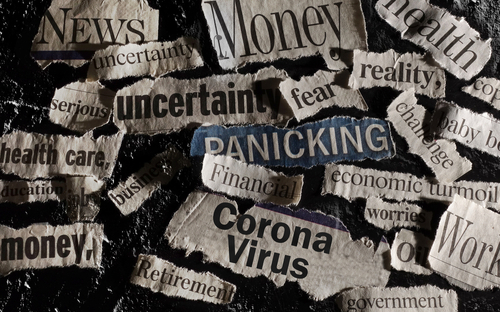 By Gideon Malherbe, VCI Founding Partner
By Gideon Malherbe, VCI Founding Partner
How do Scenario Planners respond to forces like these… ?
Pandemic lockdowns, political maneuvers and widely varied human behavior are playing into a potential collapse in global economic activity and a rupture of the traditional arteries for foreign direct investment.
Global economic activity has slowed substantially with supply chains upended and trade volumes crashing. Multinationals are responding in an array of strategies from predatory acquisitions to carve-out sales and bankruptcies. Risk management compels companies to measure vulnerabilities and shorten their supply chains.
The shortening of supply chains could actually mean the reintroduction of agencies and middlemen. See, there is only so much that the buyer can pay, and in nearly all events, the lowest cost bidder wins. The distributors of price arbitraged imports (with warehousing as the risk mitigation) will in most cases beat the local producer – in cost, volume and quality. So, don’t get too pedantic about short supply chains, it may cost you more than you can afford.
How globalization will evolve, given heightened global policy uncertainty is actually a feast for Scenario Planners.
Geopolitical tensions are sky-high including U.S.–China duels in the lead-up to the American presidential elections. China is now held hostage by its long supply chains and forced to even greater economic and political intercourse to preserve its interests. China is now drawn into the security sphere as well. It opted to use its economic, political and military leverage to expand its own direct sphere of influence from the South China Sea to India and across Central Asia into Europe. Europe is mired in its own EU based struggles and Russia with its “Lines of Effort” against the U.S. that include the courting of influential voices within the American conservative movement. The support for extreme and destabilizing political movements, and the direct targeting of voters are all potential disruptors of a global trade recovery.
So, the chessboard is loaded with potentialities and Scenario Planners have more than enough cannon fodder for weaving tales. One variable, however, is in question: Are the general public’s normal circumstances sufficiently dismembered such that any expansion of radical political maneuvers is possible? – Be it further Chinese control in HK, Taiwan or the China seas, further Russian gaming of U.S. policy makers, or more countries withdrawing from the EU? Or, will it represent a more moderate expression of frustration against its own ruling classes? Perhaps a new low will be seen where communities turn onto themselves – flaming hatred against the “other,” whatever that ”other“ may be for them.
Human behavior is a significant force in the pandemic world, and is manifested in the very public protests, predominantly political and some economic. The trigger point for most of the 2020 protests was the killing of George Floyd and the many additional relevant names. BLM, police brutality, gender equality and stances against repressive government policies are all current focus points. Most certainly we can expect a unified call for more decent human rights and equality.
It’s interesting to mention there were also sporadic protests against wearing masks, social distancing and (not yet developed) COVID-19 vaccines. Countries that saw these protests were Spain, Columbia, Brazil, the U.S. and Germany.
Less prominent, but equally important is the potential commercial behavior of consumers. Are we to imagine less hyper consumption in the U.S.? We’re likely to have a renewed urgency and response to the environmental threat. Then there are work norms triggered by the enforced working from home and virtual teamwork experiences. How will organized labor respond to the new norm, and more critically, what would the most efficient work structures be now that digital has been proven? Where is the equilibrium between work efficiency and traditional routinized crowd control? See, this is important because the technical lowest cost model is a completely virtual work organization.
The global trade model showed us some weaknesses in too-long, perfectly synchronized and fully digital supply chains. Is there a scenario in which we could postulate a design where our newly minted virtual organizations are also brokered by intermediaries? And are these labor intermediaries there not because of efficiencies, but because of risk mitigation? They guarantee that we have the skills and competencies on a 24/7 basis.
From these thoughts, we are compelled to draw several internally coherent pictures of the future. We are always reminded that no predictions are required. From these pictures of the future, we design the optimum set of strategies that will ensure the business is ready for whatever the post pandemic world may throw at us.
As we develop Scenarios for our clients every day, we are more and more confident that it remains the best planning tool in an unpredictable and chaotic world.
Let’s get in touch!
Call or text +1 914-381-0000
Or email gideon.malherbe@govci.com
July 9, 2020
0 Likes




